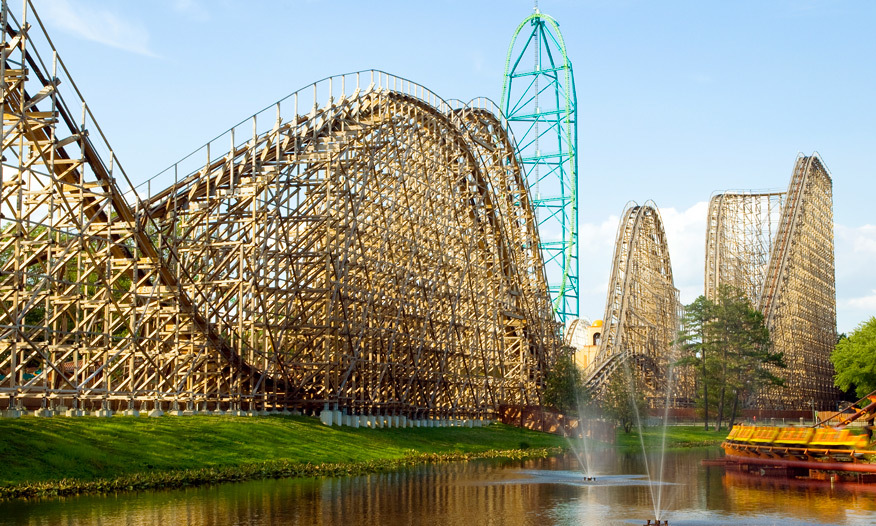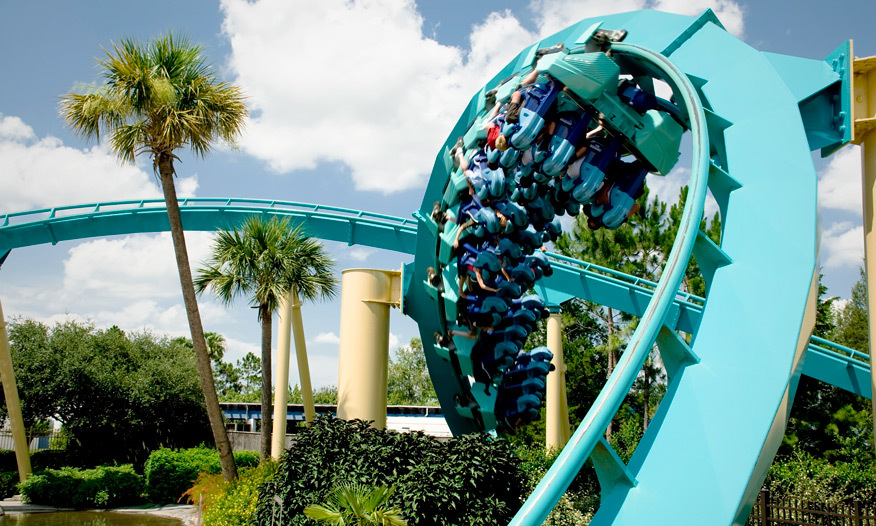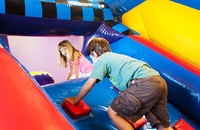GROUPON GUIDE TO CHICAGO
Inside the Stomach-Churning World of Roller Coaster Design
BY: Andrew Goodwin |Jun 21, 2018
Amusement Park Deals

Trending
Up to 23% Off Game Play Cards at Haunted Trails - Burbank
7759 Harlem Avenue, Burbank • 12.7 mi
20% discount_off
1,000+ bought
Haunted Trails - Burbank

Trending
Up to 23% Off Game Play Cards at Enchanted Castle
1103 South Main Street, Lombard • 20.3 mi
20% discount_off
Enchanted Castle - Chicago

Up to 31% Off on Indoor Play Area at Safari Land
701 West North Avenue, Villa Park • 19.2 mi
22% discount_off
Safari Land

Trending
Unlock the Fun: Unlimited Indoor Play Wristband & $20 Arcade Card
19111 Oak Park Avenue, Tinley Park • 24.9 mi
20% discount_off
Odyssey Fun World

Single-Day Waterpark Passes at Great Wolf Lodge - Up to 29% off
1700 Nations Drive, Gurnee
29% discount_off
1,000+ bought
Great Wolf Lodge Gurnee

Up to 30% Off Game Play Cards at Haunted Trails - Joliet
1423 North Broadway Street, Joliet • 33.1 mi
30% discount_off
Haunted Trails - Joliet

DISNEYLAND® Resort - Save up to $10 per ticket
1313 Disneyland Drive, Anaheim
$297
Disneyland

Kings Island - Up to 50% Off
6300 Kings Island Drive, Kings Mills
50% discount_off
Kings Island

Waterpark Passes at Three Bears Waterpark Resort
701 Yogi Circle, Warrens
20% discount_off
Three Bears Waterpark Resort - Warrens
Deals on Things to Do

Trending
Immersive Art Exhibits w/ Interactive Fun for 1, 2, or 4 in Chicago
835 Michigan Avenue, Chicago • 1.2 mi
27% discount_off
The Exhibit House of Chicago – Chicago, IL

Trending
Paint Nite Sessions for One - Four People - Create your Masterpiece!
1758 West Grand Avenue, Chicago • 2.6 mi
22% discount_off
Paint & Sip Class by Paint Nite

Trending
Cinematic Magic Begins with Regal Premiere & Premium Format Tickets
1471 W Webster Ave, Chicago • 3.6 mi
12% discount_off
Regal

Fresh Pasta Making Classes with Classpop!
30% discount_off
Pasta Making Classes on Classpop!

Wine Tasting at Michigan's Largest and Longest-Operating Winery
9145 Union Pier Road, Union Pier • 49.1 mi
38% discount_off
St. Julian Winery

Self-Guided City Scavenger Hunt Adventure for Up to Four Teams
20 East Randolph Street, Chicago • 0.4 mi
62% discount_off
Puzzling Adventures

Fun Sushi Making Classes | Learn to Roll Like a Pro
30% discount_off
Sushi Making Classes on Classpop!

Fun Cooking Classes | Top Chefs, Hands-On & Fun for All Levels
30% discount_off
Cooking Classes on Classpop!

Score Big: 45 or 90 Credits, Popcorn & Drinks Await Your Gaming Fun
8176 Wicker Avenue, Saint John • 29.4 mi
43% discount_off
Zig-E's Funland

Adventure Walk for One or Group Scavenger Hunts Available
50% discount_off
Wacky Walks

Hands-On Pasta Making Class at CocuSocial - Up to 22% Off
4925 North Lincoln Avenue, Chicago • 7.2 mi
22% discount_off
Pasta Making Classes by CocuSocial

Join the Exciting Scavenger Hunt Game for One Group Adventure
78% discount_off
It's A Scavenger Hunt!

Up to 23% Off Game Play Cards at Haunted Trails - Burbank
7759 Harlem Avenue, Burbank • 12.7 mi
20% discount_off
1,000+ bought
Haunted Trails - Burbank

Chicago Premier Plus Lunch, Brunch or Dinner Cruises
455 North Cityfront Plaza Drive, Chicago • 0.7 mi
15% discount_off
City Cruises Chicago - Premier River Dining

Fun Dumpling Cooking Classes | Fold, Fill & Steam Authentic Dumplings
30% discount_off
Dumplings Cooking Classes on Classpop!





